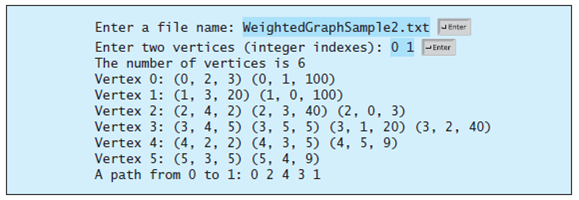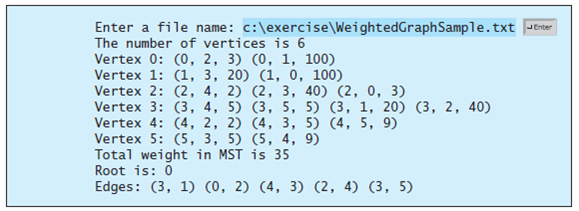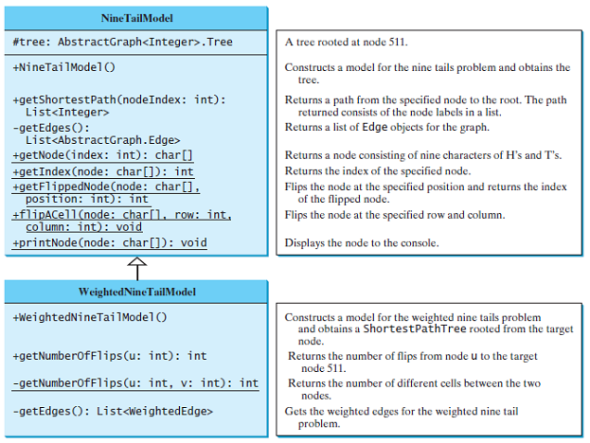Write a program that reads a connected graph from a file. The graph is stored in a
Question:
Write a program that reads a connected graph from a file. The graph is stored in a file using the same format specified in Programming Exercise. Your program should prompt the user to enter the name of the file then two vertices, and should display a shortest path between the two vertices. For example, for the graph in Figure, a shortest path between 0 and 1 can be displayed as 0 2 4 3 1.
Here is a sample run of the program:

Write a program that reads a connected graph from a file and displays its minimum spanning tree. The first line in the file contains a number that indicates the number of vertices (n). The vertices are labeled as?0,?1, ...,?n-1. Each subsequent line describes the edges in the form of?u1, v1, w1 | u2, v2, w2 | .... Each triplet in this form describes an edge and its weight. Figure shows an example of the file for the corresponding graph. Note that we assume the graph is undirected. If the graph has an edge (u,?v), it also has an edge (v,?u). Only one edge is represented in the file. When you construct a graph, both edges need to be added. Your program should prompt the user to enter the name of the file, read data from the file, create an instance?g?of?WeightedGraph, invoke?g.printWeightedEdges()?to display all edges, invoke?getMinimumSpanningTree()?to obtain an instance?tree?of?WeightedGraph.MST, invoke?tree.getTotalWeight()?to display the weight of the minimum spanning tree, and invoke?tree.printTree()?to display the tree. Here is a sample run of the program:

(Hint: Use?new WeightedGraph(list, numberOfVertices)?to create a graph, where?list?contains a list of?WeightedEdge?objects. Use?new WeightedEdge(u, v, w)?to create an edge. Read the first line to get the number of vertices. Read each subsequent line into a string?s?and use?s.split("[\\|]")?to extract the triplets. For each triplet, use?triplet.split("[,]")?to extract vertices and weight.)

Step by Step Answer:

Introduction to Java Programming, Comprehensive Version
ISBN: 978-0133761313
10th Edition
Authors: Y. Daniel Liang





